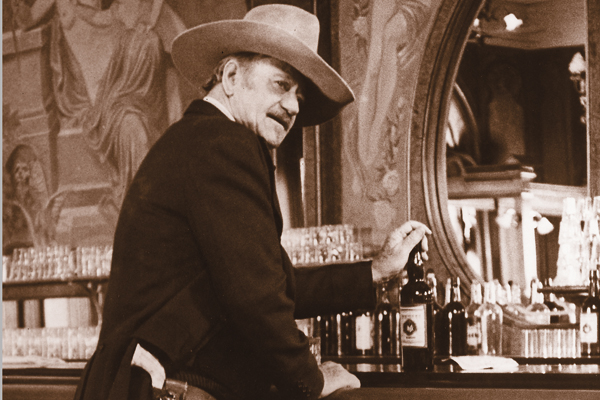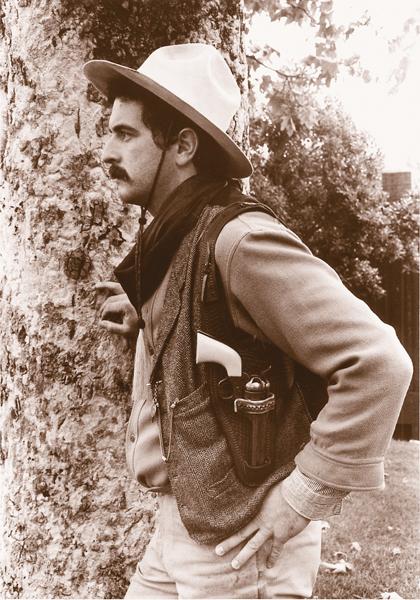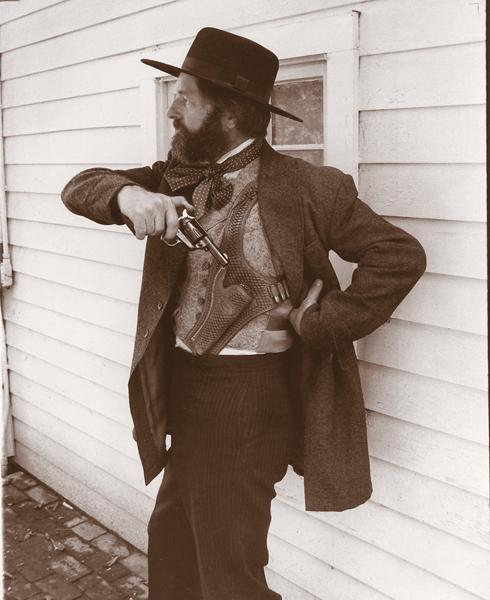 While we often think of the shoulder holster as a product of the gangster era of the 1920-30s, the rig was actually a creation of the gun toters of the Old West.
While we often think of the shoulder holster as a product of the gangster era of the 1920-30s, the rig was actually a creation of the gun toters of the Old West.
The concealment that a shoulder holster afforded allowed Western shootists to be “well heeled” while not attracting unwanted attention.
The most common type of shoulder rig used on the frontier was the Texas Pattern, which made its debut sometime during the late 1870s and is believed to be the earliest style. Texas gunman Ben Thompson packed his pistol in such a manner.
This shoulder holster was a contoured, pliable, half pouch, single-ply leather scabbard that was sewn (and sometimes riveted) to a heavier, two-ply back panel. The rig was secured in place by a looped shoulder strap and often a narrower strap affixed to the lower portion of both sides of the harness. Unlike today’s rigs, there was no securing strap connected to the toe of the holster, making drawing a slower, two-hand proposition. If it appeared that trouble was forthcoming, a savvy gunman might carry his revolver partially withdrawn.
By the late 1890s, a much-improved Clip Spring, or Skeleton model, was available. This shoulder holster style supposedly came from the collaboration of two Montana saddlers—Al. Furstnow of Miles City and E.D. Zimmerman of nearby Custer County—who began producing the model at about the same time. The style consisted of a stiff, two-ply, contoured backing with a single, leather covered, spring-steel band or strap that would support the weapon’s frame, while the muzzle was held in place by a small socket at the base of the backing. This skeletonized rig left the firearm exposed for fast removal by simply pulling it forward, yet kept the gun held firmly in place. Sometimes, a leather flap covered the upper portion of the handgun to protect against perspiration and keep it from snagging on clothing.
The early years of the 20th century saw the appearance of the Half Breed shoulder rig. This holster incorporated design elements of both its predecessors and eventually replaced the earlier models.
The Half Breed is similar to the Texas pouch type except that the seam facing the front of the wearer is left open and the rig uses the Clip Spring setup to retain the gun. With its full, two-ply leather housing, the Half Breed allows a quick draw by simply pulling the gun forward, with almost complete protection from catching on clothing.
Patented in 1911, by Reno, Nevada, holster maker F.R. Lewis, the Half Breed came too late to see any use in the Old West, but it did see service during the turbulent years of Prohibition, when the West was still open and wild. This rig became the foundation for many of today’s shoulder holsters.
Photo Gallery
– All photos courtesy Guns & Ammo magazine –








